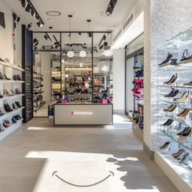Physical Stores that Lead the Experience Revolution Will Thrive

Retail
74 week ago — 5 min read
A few years ago, we feared the total disappearance of stores in favour of online retail. We were partially correct. While the physical store didn’t disappear, we did witness an exponential growth of online sales. When the world was hit by the COVID-19 pandemic, the retail world turned upside down. As the world returned to normal, we predicted retail models that were successful in 2018-19.
However, in the past few months, there has been a drop in online purchases, particularly in the United States and Europe. 2022 witnessed a 20 per cent drop in online sales – something none of us expected to see.
The digital shopping experience is not going anywhere. But neither is the store experience. Sustainability, low carbon footprints, and new rules regarding exchange has promoted people to go back to stores to shop.
There are three factors that have contributed to this trend. Firstly, people have become more mindful that purchasing something from the other side of the world means an increased carbon footprint. Instead of buying international brands, people have opted to go local. Homegrown brands, too, are more mindful that people are willing to pay extra for high-quality sustainable products. It then becomes a win-win for all.
Secondly, online portals are now charging customers who want to return their products. In Europe and the United States, the cost of returning a parcel is anything between $15 and $18.
Finally, store experiences have become a critical part of the physical store. Thanks to these experiences, customers now browse online and visit the physical store to make the purchase post experience.
How Can Retailers Capitalise?
Naturally, the retailers who will stay ahead of the curve are the ones that will capitalise on this situation. Here are some suggestions that retailers could employ to do the same. Firstly, retailers need to realise that shoppers do not want to look at screens all the time. Digital tools are required to target two specific things.
- Streamline the purchasing process (queue at checkouts, out of stocks, wrong information about product)
- Facilitate employee interactions with shoppers to enhance the overall customer experience.
Artificial intelligence must be used smartly. Retailers should use AI to manage customer data, and not as a tool to influence shopper behaviour. AI should also be used to manage inventory in the warehouse and store shelves.
Finally, retailers need to rethink the store experience by moving out of ‘products and stores’ to ‘customer focus’. By doing this, retailers achieve the following:
- Defining a target shopper to build an assortment dedicated to the target audience
- Redefining the selling journey by understanding that you can’t sell everything
- To personalise communication and promotion
- To eliminate factors that hinder store business
- To motivate and train teams to do their job
To conclude: Do you know why a shopper will go on to visit the physical stores? To find all that s/he can’t find online.
In conclusion, the retail industry has undergone significant changes in the last few years, with a shift towards online sales, followed by a drop in recent months. This trend can be attributed to consumers’ growing concern for sustainability, the added cost of returning products online, and the importance of in-store experiences. Retailers who want to stay ahead of the curve must embrace technology, such as AI, to manage customer data, inventory, and improve the store experience. The focus should be on the customer, with a defined target audience, a personalised selling journey, and a motivated and trained team. By doing so, retailers can continue to grow and succeed in this ever-changing industry.
Article source: Article by Frederic Perodeau for STOrai Magazine.
Disclaimer: The views and opinions expressed in this article are those of the author and do not necessarily reflect the views, official policy or position of GlobalLinker.
View STOrai 's profile
Other articles written by STOrai Magazine
The Art & Science of People Pleasing in Retail
16 week ago
Most read this week













Comments
Share this content
Please login or Register to join the discussion